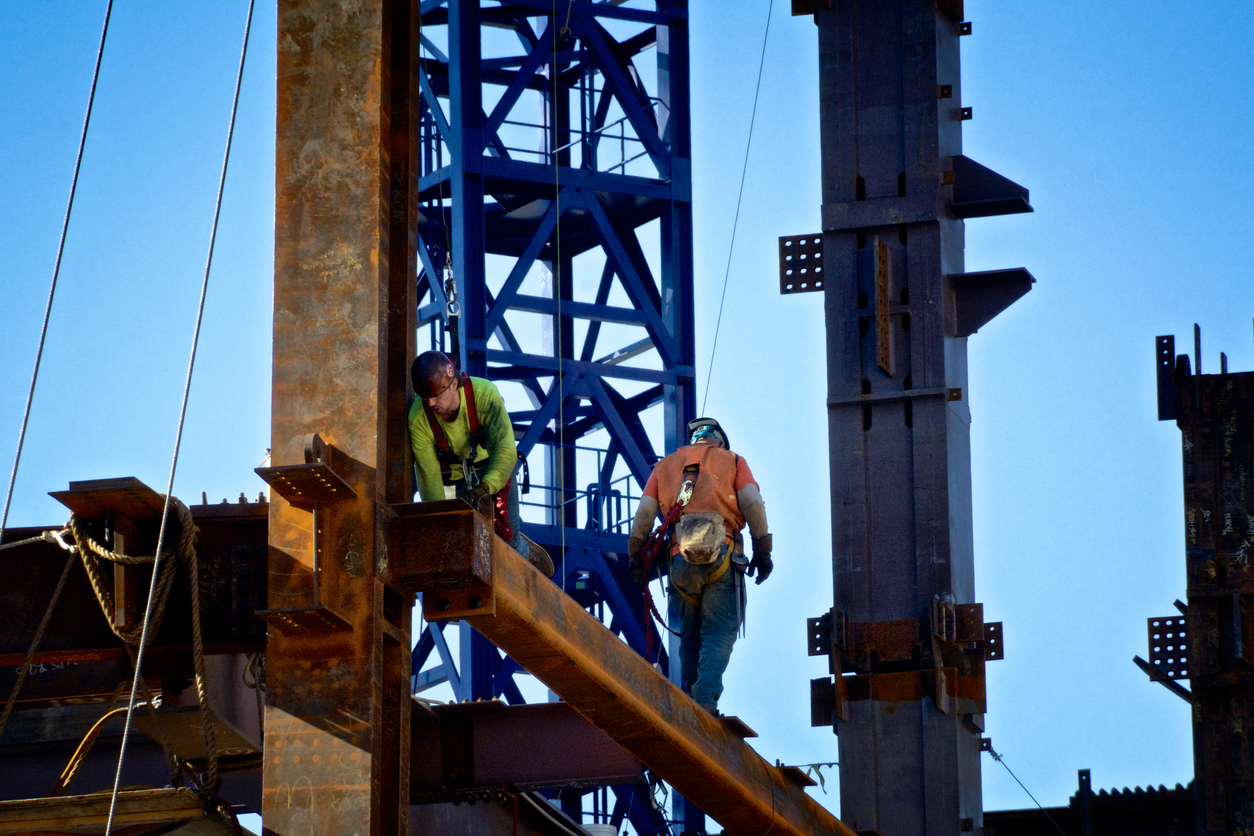A steel beam shifted at JFK Airport and three construction workers were pinned beneath it. Two were taken to the hospital with serious injuries. One escaped with minor harm. Incidents like this aren’t random—they’re preventable. In New York, the law exists to protect workers from exactly these kinds of accidents involving falling beams, shifting loads, and failed rigging. When safety devices are missing, defective, or used incorrectly, the law holds the people who control the jobsite responsible—not the worker who got hurt.
On a properly run site, heavy materials don’t move freely. Every lift is planned, the load is calculated, and the right safety devices—slings, chokers, clamps, hoists, braces, and tag lines—are chosen, inspected, and used. When those protections aren’t in place, when corners are cut, or when supervision breaks down, workers pay the price. That’s when New York’s construction safety laws step in. They put the burden on owners and general contractors to make sure gravity-related hazards are controlled and the site is safe.
Our law firm helped shape that law in one of the most important decisions in New York construction history: Wilinski v. 334 East 92nd Street Housing Development Fund Corp. In that case, we proved that what matters isn’t whether an object fell from high above—it’s the force a heavy object can generate, even over a short drop. The Court of Appeals agreed, rejecting the old “same level” rule that companies used to escape responsibility. That ruling changed how New York courts view falling-object accidents and expanded protection for workers across the state.
In cases like the JFK beam incident, it doesn’t matter if the beam was lifted only a few feet. What matters is that it was heavy, capable of generating enormous force, and should have been secured properly. If a beam that massive moves or falls, it’s because someone failed to plan the lift, inspect the rigging, or use the right safety equipment. That’s not bad luck—it’s negligence.
After an accident like this, the first step is getting medical care. Keep every record, scan, and bill. Then, if possible, preserve what you can from the jobsite: photos of the beam, the rigging setup, the hoist, the tag lines, the clamps or braces. Write down names of coworkers and supervisors who saw what happened. The more details you capture, the stronger your case will be.
Workers’ compensation will cover medical bills and part of your lost wages, but it doesn’t cover everything. You’re entitled to bring a separate claim against the property owner, general contractor, or another company that controlled the work and failed to keep the site safe. That’s how injured workers recover full damages—pain and suffering, full lost earnings, and future medical needs.
Behind every case like this lies a complex web of insurance policies. Construction projects often involve several layers of coverage: a subcontractor’s general liability policy, the general contractor’s policy, sometimes a “wrap-up” or “OCIP” program that insures everyone on the job, plus umbrella or excess layers on top. These policies contain fine print—exclusions for “Labor Law” or “hoisting” claims, limits on height or scope, and clauses that decide who pays first. Understanding those policies and forcing the right carrier to cover the claim is crucial. Our law firm handles that part of the fight so our clients don’t have to.

Many injured workers worry they might have made a mistake—grabbed the wrong strap, stood too close, or didn’t react fast enough.
In these cases, that doesn’t matter. The law protects workers even when they make a mistake, because the duty to provide proper safety devices and supervision rests with those in charge.
The law recognizes that construction is dangerous, and workers can’t be expected to carry the burden of someone else’s poor planning or cheap equipment. For owners and contractors, the message is clear: if you control the work, you control the risk. You must use competent riggers, follow hoisting and steel erection safety standards, document every inspection, and carry insurance that actually covers the risks of a gravity-related accident. When a beam falls, that paper trail—or lack of it—decides who pays.
Our firm has handled countless beam, hoisting, and rigging cases throughout New York City—from JFK airport to Manhattan high-rises to Bronx demolition sites. We know how to prove that a beam didn’t “just fall.” We secure the lift plans, inspection reports, safety meeting notes, permits, and insurance contracts that reveal what really went wrong. We coordinate the workers’ compensation benefits to protect medical coverage and wage replacement while pursuing the third-party case for full compensation.
If you were injured in a beam or hoisting accident—or if your case has stalled with another attorney—reach out today. Switching lawyers is simple, and your legal fee stays the same. We’ll handle the transfer, move the case forward, and preserve every piece of evidence.
Our law firm has spent decades fighting for construction workers injured by unsafe conditions. We helped make the law that protects you. And when a beam falls, when the rigging fails, when gravity wins because safety didn’t—our job is to make sure you do. Call us 24/7 or contact us through our website or live chat to speak directly with an experienced attorney at The Platta Law Firm. We fight for injury victims across New York and will help you get the justice and compensation you deserve.

